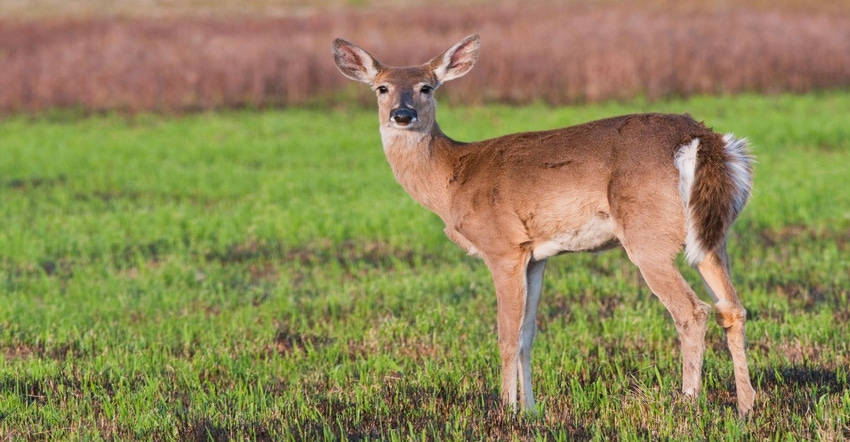December 9, 2021

Recent scientific research has shown a high prevalence of SARS-CoV-2 infection within white-tailed deer populations in North America. This is the first time that the virus has been detected at population levels in wildlife.
In the study, more than 80 percent of the white-tailed deer sampled in different parts of Iowa between December 2020 and January 2021 tested positive for SARS-CoV-2. The percentage of SARS-CoV-2 positive deer increased throughout the study, with 33 percent of all deer testing positive.
The World Organisation for Animal Health thinks this discovery requires further research to determine if white-tailed deer could become a reservoir of SARS-CoV-2 and to assess other animal or public health implications. As they do not show clinical signs of infection, white-tailed deer should be monitored for the possibility of becoming a silent reservoir.
While there is currently no evidence of transmission of SARS-CoV-2 from white tailed-deer to humans, there appears to have been multiple introductions of the virus into white-tailed deer populations by humans. We encourage countries to raise awareness with both hunters, and those living or working with wildlife, to avoid unnecessary interactions with wildlife and to avoid leaving any human waste or objects in forested areas that may be ingested or touched by deer and other wildlife.
Despite the broad circulation of SARS-CoV-2 in white-tailed deer populations, the virus does not appear to have significantly mutated. While this lessens concerns for the emergence of new virus strains that may be harmful to humans, more information must be gathered to understand the effects of the virus’ introduction to wildlife on the ecosystem. Therefore, the World Organisation for Animal Health (OIE) calls on countries and other concerned parties to:
Encourage collaboration between national Veterinary Services and national wildlife authorities, whose partnership is key to promoting animal health and safeguarding human and environmental health.
Inform the OIE of current wildlife surveillance and monitoring efforts for SARS-CoV-2, including relevant scientific studies concerning white-tailed deer or other cervids through [email protected] .
Monitor, and where possible, test cervids populations in all regions to further understand the spread of infection within the while-tailed deer population and among other deer and wildlife species.
Share all genetic sequence data from animal surveillance studies through publicly available databases.
Report confirmed animal cases of SARS-CoV-2 to the OIE through World Animal Health Information System (OIE-WAHIS )
Source: World Organisation for Animal Health, which is solely responsible for the information provided and is wholly owned by the source. Informa Business Media and all its subsidiaries are not responsible for any of the content contained in this information asset.
You May Also Like




